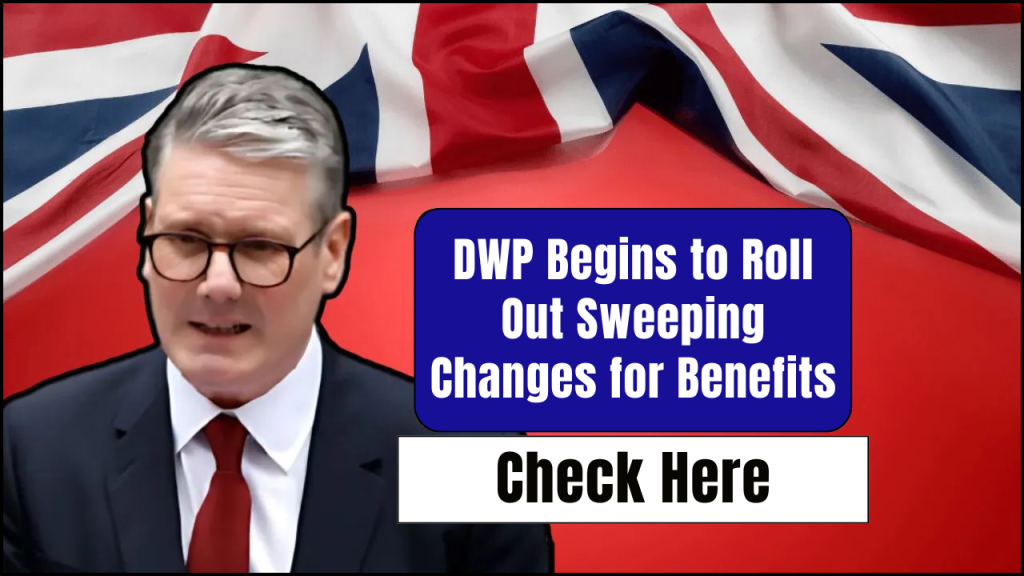
In a bold move to tackle long-term unemployment, the Department for Work and Pensions (DWP) has launched a comprehensive new strategy to help more jobless individuals return to work. This shift marks one of the most ambitious overhauls of the welfare-to-work system in recent years, as it addresses the growing number of people unable to work due to health issues, skill shortages, or other barriers.
At the heart of this transformation is a new government-backed initiative titled Connect to Work. This programme is tailored specifically to help individuals, particularly those with disabilities or health conditions, transition from unemployment to sustainable employment. With a strong emphasis on personalised support and collaboration with employers, Connect to Work is being rolled out as a long-term solution, not just a temporary fix.
What Is Connect to Work?
Connect to Work is a five-year employment support initiative spearheaded by the DWP. It aims to help over 100,000 people each year by equipping them with skills, guidance, and job opportunities suited to their individual circumstances. The government has already committed £40 million to the initial launch phase, which began in West London and will be expanding to 47 other areas across England and Wales.
Unlike traditional benefits, which often provide financial assistance without addressing the root causes of unemployment, Connect to Work is designed to offer holistic support. This includes job training, one-on-one career coaching, help with applications and interviews, and direct connections with inclusive employers.
Key Features of the Programme
Here’s a quick breakdown of what Connect to Work offers:
- Target Audience: Primarily unemployed individuals, especially those with health conditions or disabilities.
- Initial Investment: £40 million focused on the West London pilot.
- Annual Reach: Over 100,000 claimants.
- Program Length: Five years.
- Support Provided: Job search guidance, skills development, and employer engagement.
- Coverage: 47 locations across England and Wales.
Carer’s Allowance 2025, Updated Payment Dates, Rates & Eligibility
Universal Credit Goes Up by 6.7% in April 2025, A Full Breakdown of What’s Changing
A Shift in Welfare Policy
This new approach reflects a fundamental change in how the UK government views welfare. Rather than solely offering financial support, the DWP wants to actively prepare people for meaningful employment. Liz Kendall MP, Secretary of State for Work and Pensions, has described the UK’s welfare system as “broken” and believes this reform is critical to giving people a real shot at independence.
According to Kendall, the Connect to Work initiative is about creating a system that offers solutions, not just handouts. The plan is to build a job market that welcomes people from all backgrounds and levels of ability by directly supporting individuals who want to work but face hurdles in doing so.
Why It Matters Right Now?
There are an estimated 2.8 million people in the UK who are currently out of work due to long-term illnesses. This alarming figure highlights the need for support mechanisms that go beyond financial aid. Instead, the goal is to help individuals get back on their feet with access to training, healthcare, and job placement services.
In addition to launching Connect to Work, the government has also pledged £26 billion to strengthen the NHS, aiming to offer an additional 2 million appointments. This investment is expected to reduce waiting times and help people recover faster so they can re-enter the workforce sooner.
What Kind of Help Can Participants Expect?
Those who join Connect to Work will receive a personalised experience tailored to their needs and goals. The programme includes:
- Tailored career planning and support
- Training sessions to build job-ready skills
- One-on-one mentoring and coaching
- Application and interview assistance
- Links to inclusive employers who are ready to hire
Support will be delivered through a network of local partnerships involving councils, NHS providers, and private businesses.
Where and How to Join?
Currently Active in West London, the programme will soon be available in 47 local authority areas. If you’re unemployed and live in one of these regions—especially if you’re dealing with a disability or long-term health issue—you may qualify for support.
Steps to Enrol:
- Check Your Eligibility – You must be unemployed and reside in one of the covered areas.
- Apply Through DWP – Visit the official DWP website, call your local Jobcentre, or apply in person.
- Start Your Journey – Once accepted, you’ll be matched with a dedicated team to help guide you through the process of finding suitable employment.
Support for Employers
Connect to Work isn’t just beneficial for job seekers; it also offers advantages for employers. Businesses partnering with the programme will gain access to a talent pool of motivated candidates who are pre-trained and supported to succeed.
Employers can also expect:
- Guidance on inclusive recruitment practices
- Support in modifying roles for individuals with specific needs
- Opportunities to build a more socially responsible and diverse workforce
The DWP encourages employers across sectors to collaborate with the initiative and become part of the broader effort to build a more inclusive labour market.
Final Takeaways
The DWP’s Connect to Work initiative represents a significant and timely shift in how the UK addresses unemployment. By offering real support and fostering partnerships with employers, this programme is not only helping individuals find work, but it’s helping to rebuild the nation’s workforce in a more inclusive and sustainable way.
If you or someone you know is unemployed and struggling to find work, now is the time to explore Connect to Work. For more updates on benefits, employment support, and cost-of-living news, stay tuned to our latest articles.